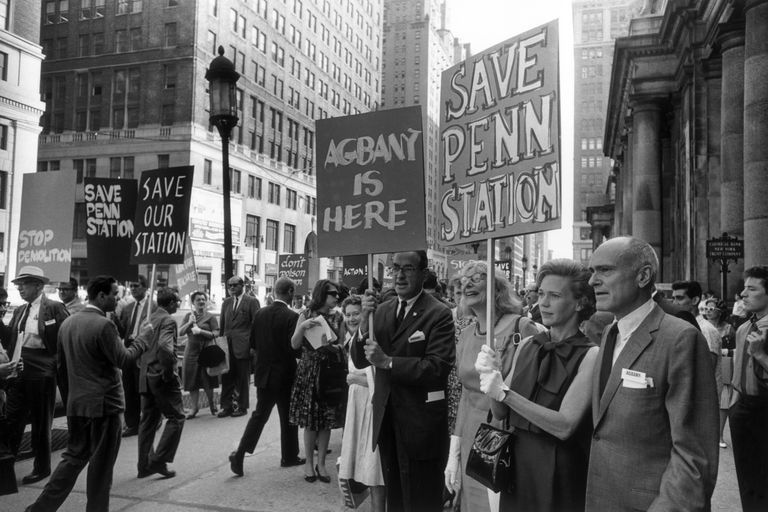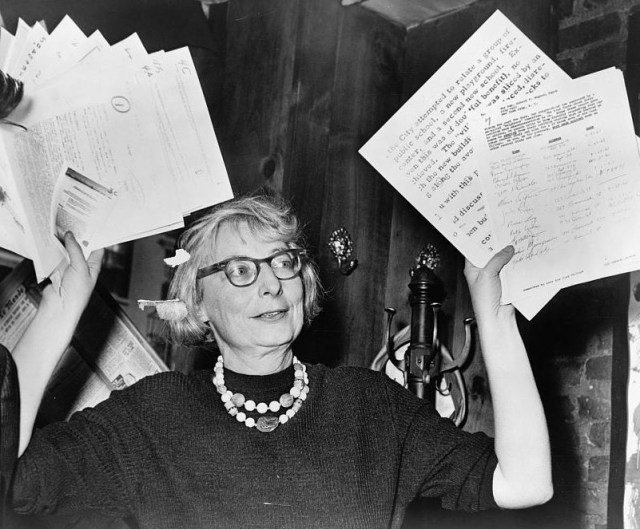Credit Image: Phil Stanziola via Wikimedia Commons

This is the fifth entry in our Free Minds series.
Jane Jacobs was the epitome of a free mind: self-taught, polymathic, anti-ideological, observational, original and perpetually ahead of her time.
One of most influential Americans of the 20th century, she challenged and then transformed the practice of urban planning despite having no formal qualifications in the field (or rather because she didn’t).
She is best known for two things. The first was her successful campaign to stop the ten-lane Lower Manhattan Expressway, which would have wrecked one the greatest cityscapes in the world. The second was to write The Death and Life of Great American Cities a remarkable book that revolutionised our understanding of how cities – and, by extension, entire economies – actually work. Many of her ideas like ‘social capital’ and ‘eyes on the street’ are now so commonplace that we forget where they came from. But they were hers – and she developed them not through abstract theory, but by observing her beloved Manhattan and everything that engendered its commercial and social vitality.
She demonstrated that the vital ingredients for a successful city were a dense network of walkable streets; a rich variety of buildings of different styles and ages; and overlapping primary uses – residential, commercial, cultural etc – so that streets stay in use throughout the day.
Again, that now seems uncontroversial, but in the post-war period it went against all the architectural and planning orthodoxies of the era. This was an age in which the dreams (or nightmares) of Le Corbusier and the other modernists were made real. In many places it wasn’t just historic buildings that were destroyed, but entire streets and neighbourhoods; all to make way for the tower blocks, ring roads and other features of the promised concrete utopia.
Jacobs’ objections went well beyond the aesthetic, she showed how the top-down rationalism of the post-war planners would blight local economies and communities and create the problems that we now associate with the bleak brutalism of post-war architecture and infrastructure.

Jane Jacobs was hard to pin down politically. Her thought can be seen as both radical and traditionalist, pro-market and pro-government. As a result, she has fans (and detractors) on the left and the right. Perhaps she’s best described as a localist and a communitarian, a champion of those parts of the common good that emerge from the bottom up.
Over several books she continued to develop her ideas – and draw criticism for trespassing across disciplinary boundaries, ignoring theoretical conventions and the heinous crime of thinking aloud without appropriate credentials. A lot of the criticism was, of course, chauvinistic – with Jacobs dismissed as a ‘housewife’ or a ‘crazy dame’. Undeterred, she carried on into her late eighties, leaving the world to catch-up with her as she went along.
Her comparison of cities to living organisms or her argument that cities, not nations, are the basic unit of the global economy have now entered the mainstream – but in other respects the world is still catching up.
Ominously, her last book, published in 2004 (she died aged 89 in 2006) was her most pessimistic. Entitled Dark Age Ahead it’s a warning of the fracturing and decline of family, community, professions, academia and other vital institutions.
Some people see Dark Age Ahead as prophesying the Age of Trump, but her real point is about the danger of replacing institutions with ideology:
“Virtually all ideologues, of any variety, are fearful and insecure, which is why they are drawn to ideologies that promise prefabricated answers for all circumstances.”[1. Jane Jacobs, Dark Days Ahead, Random House (2004), p.115]
Jane Jacobs was a fearless foe of all things prefabricated, a free mind whose ideas have made the world a better place.










Join the discussion
Join like minded readers that support our journalism by becoming a paid subscriber
To join the discussion in the comments, become a paid subscriber.
Join like minded readers that support our journalism, read unlimited articles and enjoy other subscriber-only benefits.
Subscribe